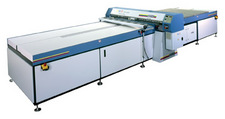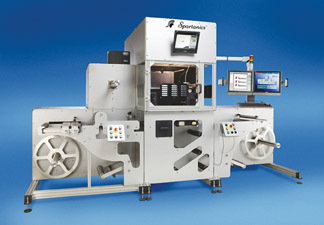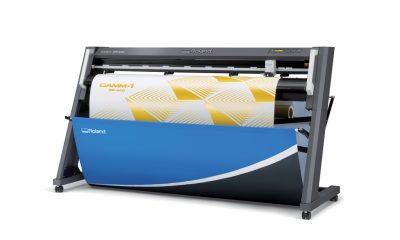Screen printing is a versatile and flexible approach to graphics and industrial applications. Screen presses can be set up to accommodate a tremendous variety of substrate types, shapes, and sizes. Furthermore, the selection of ink formulations on the market makes printing possible on just about any material. However, increasing demands for short-run work prompt many screen printers to investigate wide-format inkjet printers.
Inkjets offer a way to more profitably fulfill orders for product prototypes, graphics that involve variable data, and other such jobs that could devour a screen shop’s bottom line. Despite all the potential that wide-format inkjet printers have to offer, most units aren’t designed to handle extremely thick and heavy media. This means screen printers who focus on industrial graphics may not be able to fully take advantage of the technology.
Tampoprint developed its DMD EP 1600 Industrial Inkjet System to print high-resolution graphics onto a variety of rigid and flexible substrates, including materials as heavy as 330 lb (150 kg) and 19.7 in. (500 mm) thick. The wide-format solvent inkjet printer has been used to print on assembled refrigerator doors, wooden doors and tables, 15-sq-ft slabs of 2-in.-thick marble (1.4 sq m x 51 mm thick), and 4-in.-thick (102-mm-thick) acrylic sheets. Tampoprint says the unit also is particularly well-suited for direct printing on glass, ceramic tiles, metals, hard or soft foam plates, Plexiglass, Signicolor, aluminum composite panels, PVC sheets, vinyl foils, textiles, and other coated and uncoated materials.
Screen printers can use the DMD EP 1600 to prototype industrial products, such as control-panel housings, for client approval and then let the run length dictate whether to continue the job on the inkjet printer or take it to a screen press. The DMD EP 1600 also can be used for the decoration of wall hangings, room dividers, garage doors, vending machines, cupboard doors, blinds, shutters, counter tops, bars, and more.
The DMD EP 1600’s four printheads (two colors/head) allow for the use of three inkset configurations: dual CMYK, CMYK plus lacquer, or CMYKLcLm plus lacquer. The lacquer can be used to add appeal to graphics, but it’s also useful for pre- and post-treating substrates like glass. The printer delivers imaging resolutions up to 1440 dpi and can print at speeds up to 301 sq ft/hr (28 sq m/hr). It supports a maximum imaging area of 63 x 98.4 in. (1600 x 2500 mm).
Tampoprint’s solvent-based pigmented inks are formulated for brilliance, high brightness, two years of outdoor durability, and resistance to stress fractures and flaking when thermoformed. The inks can be replenished on the fly. Standard ink volume is 300 ml/color. Users can specify a 1000-ml/color ink volume as an option.
Other options are designed to address issues related to productivity and shop environment. They include heating, drying, ionization, vacuum, and suction/filtration. A heating lamp mounted next to the printhead assembly facilitates rapid drying on some materials, such as non-porous substrates. The drying system consists of a bank of fans and is intended for use with temperature-sensitive media. The ionization unit is situated ahead of the print carriage to control the often quick build-up of static, and a vacuum table is available for applications that involve sheets of lightweight or flexible materials. Finally, the suction/filtration system actively moves solvent emissions through activated charcoal in order to reduce VOCs.
The printer is 246 in. long x 100.5 in. wide x 47 in. tall (6240 x 2552 x 1200 mm). It stands 67 in. (1700 mm) tall with the printheads fully raised. The printer weighs 3528 lb (1600 kg). For more information, contact Tampoprint Intl Corp., 1400 26th St., Vero Beach, FL 32960, 772-778-8896, fax: 772-778-8289 e-mail: sales@tampoprint.com, Web: www.tampoprint.com.

 Case Studies2 months ago
Case Studies2 months ago
 Art, Ad, or Alchemy2 months ago
Art, Ad, or Alchemy2 months ago
 Andy MacDougall2 months ago
Andy MacDougall2 months ago
 Columns3 weeks ago
Columns3 weeks ago
 Editor's Note3 weeks ago
Editor's Note3 weeks ago
 Marshall Atkinson3 weeks ago
Marshall Atkinson3 weeks ago
 Thomas Trimingham2 months ago
Thomas Trimingham2 months ago
 News & Trends2 months ago
News & Trends2 months ago








